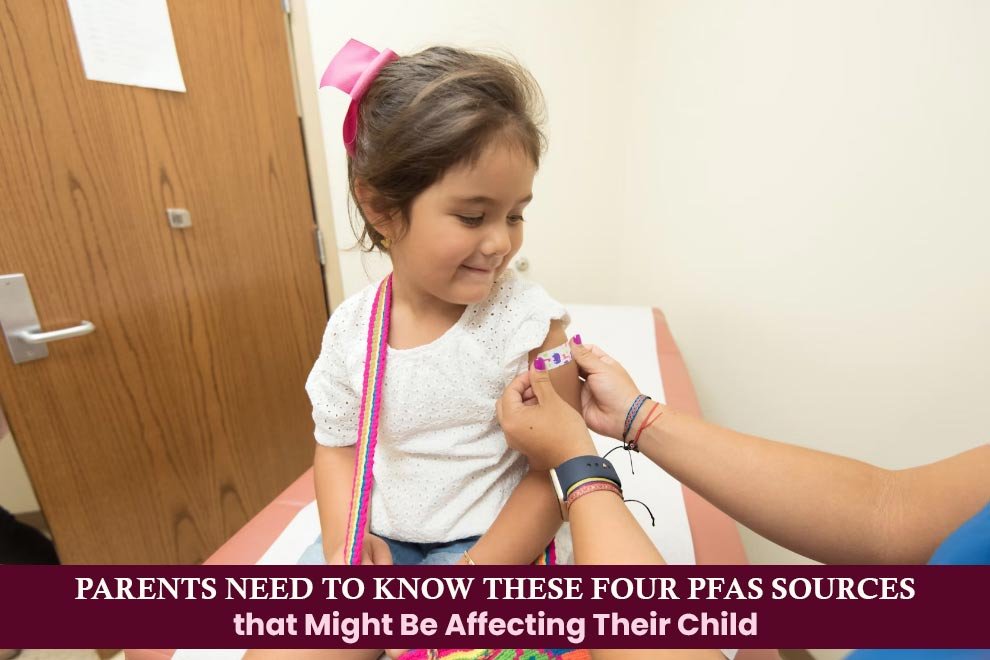PFAS, a group of synthetic chemicals pervasive in everyday products, is increasingly raising concerns across the United States. The Environmental Protection Agency (EPA) has highlighted troubling levels of PFAS contamination, emphasizing the potential health risks associated with these persistent substances.
According to a recent CNN report, PFAS have been linked to significant disruptions in pathways critical for human growth and development. The study cited by CNN also revealed that exposure to a combination of PFAS compounds interferes with lipid and amino acid metabolism. Additionally, it disrupts thyroid hormone function in children.
Given these findings, parents must understand how PFAS can infiltrate their child’s body through various sources. This knowledge empowers them to take proactive steps in minimizing exposure risks.
Drinking Water
Contaminated drinking water stands out as a particularly worrisome source of PFAS exposure. PFAS compounds have been detected in public water systems, private wells, and even bottled water.
PFAS contamination often originates from industrial sites, military bases, and landfills where AFFF firefighting foam has been used extensively. TorHoerman Law notes that this foam is recognized as a major contributor to groundwater pollution issues nationwide.
Pennsylvania, in particular, has faced severe contamination challenges. Recent reports from WHYY News indicate that nearly 19% of water systems tested in the state surpass new EPA standards for acceptable PFAS levels. This statistic underscores the heightened vulnerability of Pennsylvania residents, including children, to PFAS exposure.
For instance, Central Bucks East High School detected PFAS levels ranging from 23.25 to 11.56 parts per trillion in its water system. These levels exceed the EPA’s recommended limit of 4 parts per trillion for these chemicals.
In response, the Central Bucks School District took proactive measures by installing filtration systems, successfully reducing PFAS levels to non-detectable amounts.
However, concerns remain about other schools and communities potentially affected by similar contamination issues, highlighting the broader scope of the problem.
These alarming findings suggest a growing likelihood of legal actions akin to those seen in the AFFF foam cancer lawsuit.
As affected communities seek accountability and solutions, comprehensive monitoring, remediation efforts, and stricter regulations are essential to effectively safeguard public health against PFAS contamination.
Consumer Products
PFAS are commonly used in consumer products for their water and grease-resistant properties. Items such as non-stick cookware, stain-resistant carpets, waterproof clothing, and food packaging (like microwave popcorn bags and fast-food wrappers) may contain PFAS.
The popularity of fast food among children raises significant concerns. According to the Food Packaging Forum, national human biomonitoring studies have detected 27 out of the 68 known PFAS in human samples. Moreover, research indicates that 13 of these PFAS can migrate from food contact materials (FCMs) into the foods they contain. This highlights the potential role of FCMs in exposing children who consume these foods more frequently to PFAS.
Indoor Air Quality
Indoor air quality is a critical concern for parents due to the potential presence of PFAS. According to Environment America, U.S. industries have disposed of about 60 million pounds of PFAS into water and air over five years. That means the widespread presence of PFAS compounds is not only in water but also in the air we breathe.
Additionally, household products like furniture, carpets, and textiles treated with PFAS can release these chemicals into the air over time. This is particularly concerning in poorly ventilated spaces where concentrations can build up. Proper ventilation, choosing PFAS-free furnishings, and using air purifiers can help reduce exposure levels indoors.
Nearby Environmental Sources
Living near industrial facilities that manufacture or use PFAS-containing products can increase the risk of exposure to these chemicals. Additionally, proximity to military bases where firefighting foam has been used, or waste disposal sites also pose heightened exposure risks to PFAS.
These areas may have contaminated soil, groundwater, or air. This contamination can lead to potential exposure through direct contact, ingestion of contaminated water or food, or inhalation of contaminated dust.
Awareness of local environmental risks and advocating for stronger environmental regulations can help mitigate these exposures.
FAQs
How do PFAS affect health?
PFAS have been linked to various health concerns, including liver damage, thyroid disease, immune system disruption, and certain types of cancer. They are also known to persist in the environment and bioaccumulate in humans and animals.
What is AFFF?
Aqueous Film Forming Foam (AFFF) is a type of firefighting foam employed to extinguish fires fueled by flammable liquids. It operates by creating a film that suppresses the fire, effectively isolating the fuel from the oxygen necessary for combustion.
What are the potential health effects of PFAS exposure in children?
PFAS exposure has been associated with adverse health effects in children, including disruptions in immune function, hormone regulation, and metabolism. It may also impact liver function and contribute to developmental delays.
In conclusion, as parents, safeguarding our children’s health involves staying informed about potential environmental hazards like PFAS. While complete avoidance of these chemicals may be challenging, taking proactive steps to minimize exposure can significantly reduce risks.
From monitoring water quality to making informed consumer choices, every action counts towards creating a safer environment for our children to grow and thrive. By raising awareness and advocating for safer practices, parents can protect their children from the potential impacts of PFAS exposure.
Also Read: Should STEM Subjects Compulsory for Children? Benefits of STEM Education for Children










